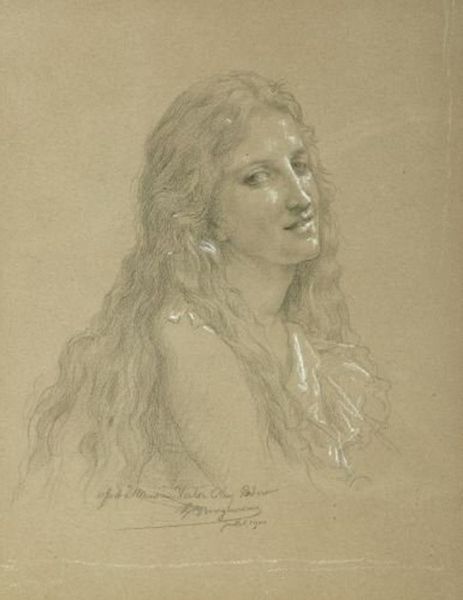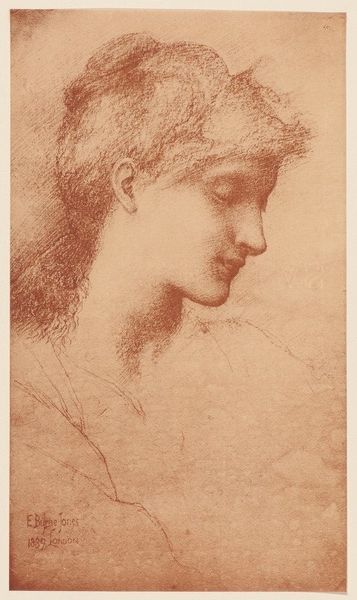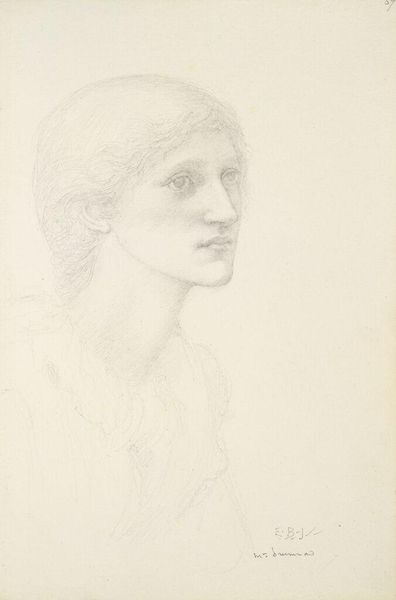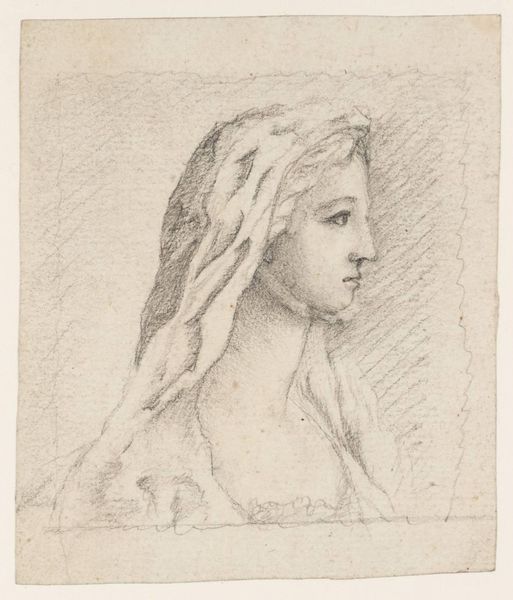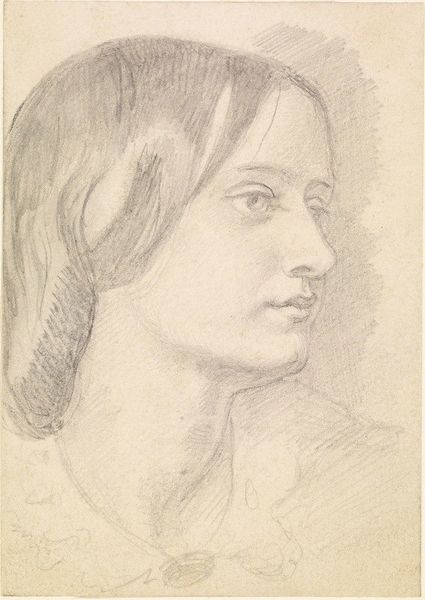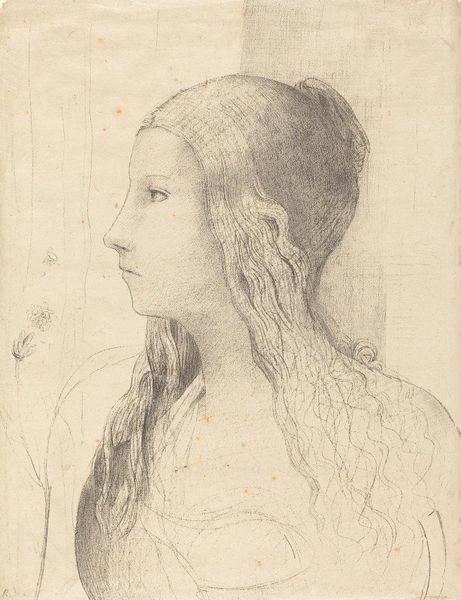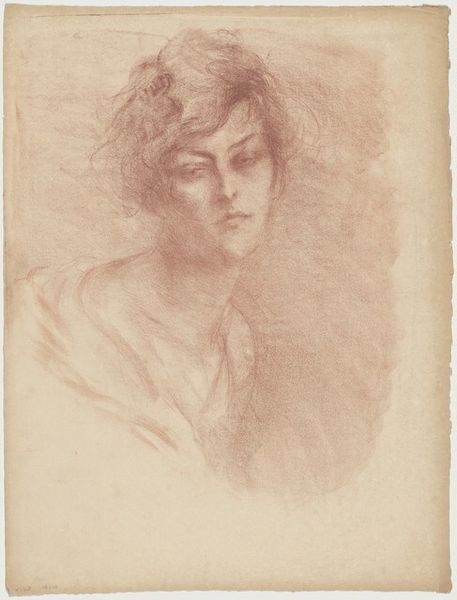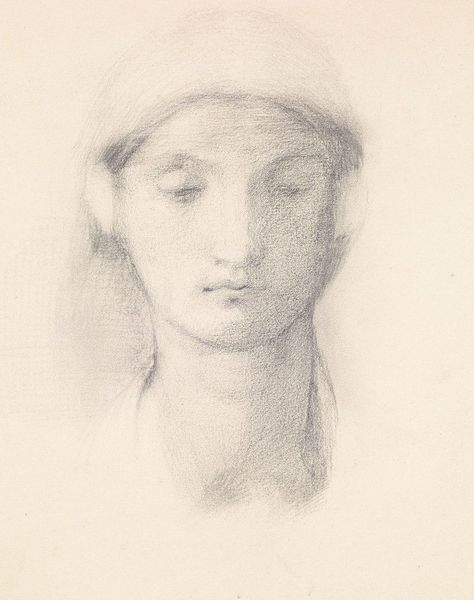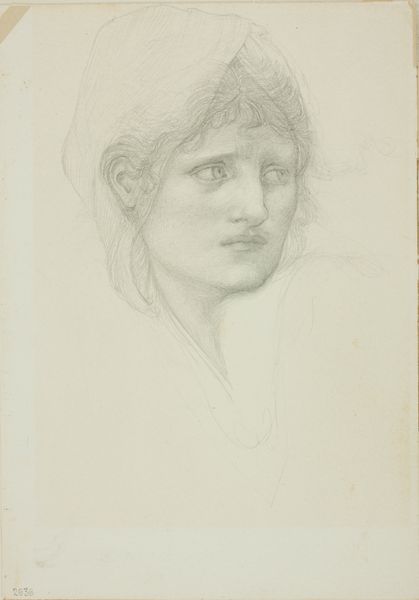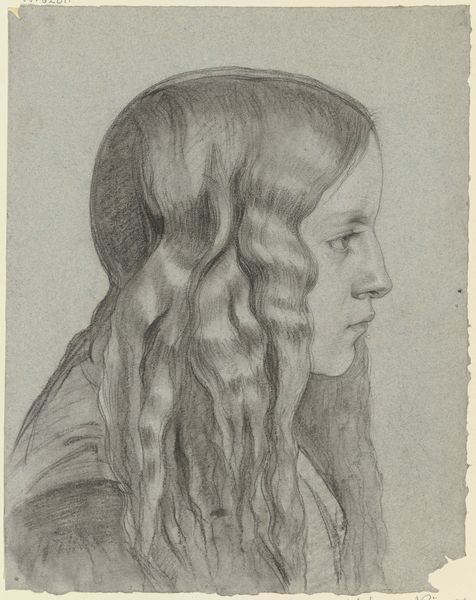
drawing, coloured-pencil, pencil
#
portrait
#
drawing
#
coloured-pencil
#
self-portrait
#
pencil drawing
#
pencil
#
portrait drawing
#
pre-raphaelites
Copyright: Public Domain: Artvee
Editor: Here we have a profile study by Edward Burne-Jones titled “Maria Zambaco.” It appears to be made from pencil and maybe colored pencil. The shading gives it a delicate feel, almost ethereal. What strikes you about this drawing? Curator: For me, it's less about the ethereal and more about the labor involved in creating this image. Think of the repetitive, almost meditative process of laying down those pencil strokes to achieve that density of tone, especially in the hair. And consider, too, where Burne-Jones sourced his pencils and paper. Were they mass produced, and if so, how did that affect the value placed on the final drawing? Editor: I hadn’t considered that aspect of artistic production. Does that repetitive mark-making influence how you see the subject, Maria Zambaco? Curator: Absolutely. We can't separate the subject from the means of representing her. Zambaco, a muse and sometimes lover of Burne-Jones, is here transformed by a *process* dependent on the very specific material conditions of Victorian England. It elevates labor – that repetitive craft -- to the same plane as idealized beauty. Editor: So you’re saying it democratizes the art, in a way, by focusing on the work and materials that go into it? Curator: Precisely! It breaks down traditional hierarchies. And let’s remember that Zambaco was also an artist; the act of drawing her in this way acknowledges her own creative labour, too. It isn't just a portrait; it's a document of production. Editor: That really gives me a different way of looking at portraits. I appreciate that focus on materiality, as it offers a unique insight. Curator: Indeed. Looking at art this way reveals stories often overlooked. There's so much more to a work than just its surface image.
Comments
No comments
Be the first to comment and join the conversation on the ultimate creative platform.
